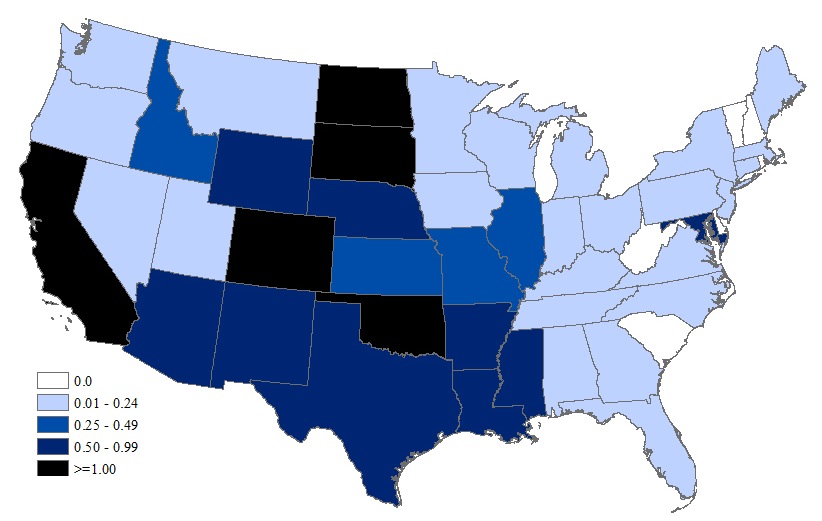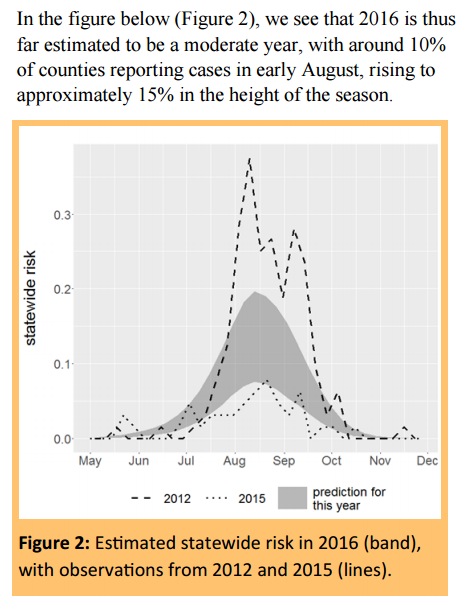South Dakota still beats Mars for oxygen, but at least Mars doesn’t have mosquitoes. The buggers carrying Zika may not frequent South Dakota (either they haven’t seen GOED’s ads, or they too are suspicious of our regressive tax system), but state epidemiologist Lon Kightlinger says our fair state is the global “epicenter” for West Nile virus. Sioux Falls health chief Denise Patton says we have the worst West Nile stats:
Of the 43 different species of mosquitoes found in South Dakota, several are known carriers of the West Nile Virus. But the two most common carriers of the Zika virus, the Aedes albopictus and Aedes aegypti species, aren’t prevalent in the state.
“We are highest in the nation for West Nile Virus per capita every year,” Patton said. “The (Aedes) are a more tropical mosquito. They’re common in Florida or somewhere down south where it’s warm all the time” [Joe Sneve, “Tire Disposal Could Help Stave Off Zika Virus,” that Sioux Falls paper, 2016.05.12].

By my calculation of incidence and population estimates, South Dakota’s occurrence of West Nile per 100,000 people is seven times the national rate. The experts at SDSU predict South Dakota will see more mosquito activity and West Nile this year than last year due to warmer weather early this year, but West Nile risk will still be lower than 2012, which was a really bad year for bug-borne bugs.

We’re still only talking less than a 1 in 20,000 chance last year of getting West Nile in South Dakota, and no South Dakotans died from West Nile last year. We’re still more likely to get sick and die from food poisoning or from riding to Sturgis.
SDSU is using NASA satellite maps to keep track of our West Nile risk. Uff da—if satellites can pick them up, those must be awfully big mosquitoes.
What say we agree to kick South Dakota out of the Northern plains states for dragging the region’s reputation down in just about every conceivable category-not to mention you got a Grudz.
I can hear wingnuts in Pierre moaning, “we’re Number 1 in something and I’ll bet tax and spend libs will want to throw more money at it.”
What say we pay no attention to anyone from Iowa concerning SD issues?
the guy lives within like 30 miles to Sx. Falls. I live all the way out in the Rockies fer chrissake.
Non-Sense, you already have that right. Now I suppose you want special rights.
Not quite 2 iowa counties from SD border.
West Nile disease is no laughing matter. A few Tripp County residents have had some serious consequences from the disease. Some ending up in wheel chairs, etc.
Douglas is right: even if not fatal. West Nile can lay one out pretty badly. Pass me the Deet!
Slightly off topic- Florida has identified at least 2 actual Nile Crocodiles in their waters. These are the big, nasty people eaters that scarf down Africans with gusto.
I live in SF and I had both West Nile virus and viral meningitis a few years back and I honestly was afraid to go to sleep afraid that I might not wake up. It was pretty dang scary.
Well her goes
We will be overwhelmed by the thought that chemistry (spray,Spray,SPRAY) is the only and BEST solution to this problem. A more natural solution is , horror of horrors, Bats.
1. Wind affect spray it blows away.
Bats don’t.
2. Wind blows in bugs from up to 30 miles away
Bats don’t care.
3. Rain washes spray away.
Bats get wet but don’t quit eating insects. MOSQUITOS
4. We don’t know if insects are are totally eliminated by spray.
Bats eat 6,000 + insects a night.
( when eaten They are DEAD)
5. Spray can only be used at certain times.
If bugs ( at nite) are flying Bats are out eating bugs.
Google Bats. And check with the
Communicable Disease Center,CDC
AND LEARN.
Thanks, Bobby Kolb! Natural solutions should be emphasized more! Another way is to encourage people to avoid having standing water that serves as a breeding ground for mosquitos. In other words, we can help solve this problem by cleaning up our own backyard!
So Bobby, we all need to build bat caves in our back yards?
Are bat numbers down? Are bats native to South Dakota?